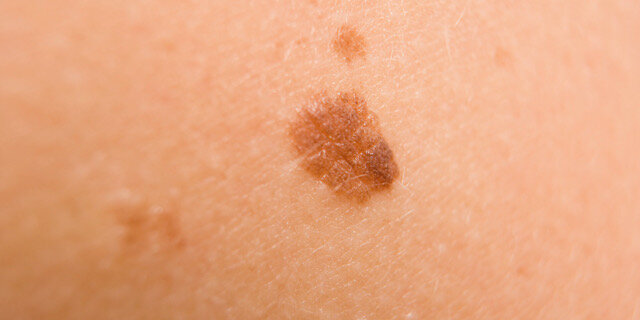What is a mole?
A mole is a common skin lesion composed of a gathering or cluster of pigment cells called melanocytes. The proper term is a melanocytic naevus or nevus. A dark brown or black mole contains an abnormal collection of the pigment melanin. Mole are often present at birth or they can appear later. There are various kinds of congenital (that you are born with) and acquired nevi.
Who gets moles?
It is a rare individual who does not have at least one mole or nevi
⦁ It is believed that 1% of individuals are born with one or more moles. Pigmentation determines if they are visible on the skin
⦁ Light skinned individuals generally have more moles than darker skinned individuals.
⦁ Most Americans have between 10 and 20 moles
⦁ Moles that appear during early childhood (aged 2 to 10 years) tend to be the most prominent and can throughout one’s life-time.
⦁ Moles can be flat or raised from the skins surface.
⦁ Moles are often acquired later in childhood or adult life following sun exposure.
⦁ Most moles are harmless or benign, but certain types can be dangerous and require the immediate attention of a physician, especially if there is a change in appearance. If in doubt, consult your doctors or health care provider.
What causes moles?
Although the exact reason for the local proliferation of nevus cells is unknown, it is clear that the number of moles a person has depends on genetic factors, on sun exposure, and on immune system status.
⦁ People living in the southern tropics have many more moles than people living in Northern Europe or the Americas. Probably due to sun exposure
⦁ Genetics probably factor into having many moles if family members also have many moles, and their moles are of a similar appearance.
⦁ New moles may appear following the use of certain BRAF inhibitor drugs, such as vemurafenib or dabrafenib
Are Skin Moles Dangerous?
⦁ Skin moles generally are not considered dangerous. In fact, in certain cultures they are considered attractive. A facial mole has often been called a beauty mark
⦁ If a mole changes appearance such as size or the color changes, you should consult your physician as certain types of moles, such as Melanoma can be deadly. Better to be safe than sorry.
How to remove an unwanted mole
Many individuals want to have their moles removed for a myriad of reasons, including;
⦁ They consider visible moles unattractive.
⦁ Jewelry or clothing can catch or hang up on a raised mole, often causing discomfort and bleeding
⦁ Fear of having a mole become malignant
⦁ Cultural reasons
Once the decision is made to remove a mole several options are available:
⦁ Surgery. A physician, generally a dermatologist, can use a scalpel and a local anesthetic to remove the mole in an office or surgical room.
⦁ Freezing. The mole and the cells around it are treated with a super-cold medium that freezes and kills the cells. Unfortunately, the process often kills the skin cells surrounding the moles, is painful and can result in unnecessary scarring and infection.
⦁ Acids are occasionally used to destroy the cells or the mole. This process, like freezing, can be very painful and resulting in infections and unnecessary scarring.
⦁ Alternative and natural products. There are several alternative or holistic or homeopathic approaches, that believe with the application of natural ingredients such as selected herbs, the body’s immune system is activated and destroys the lesion, in this case, the mole or Nevi is eliminated without effecting the surrounding skin. Our Bio-T topical Ointment is an example of these types of products.
Take Away
Moles are common lesions of the skin that are caused or created by genetic factors; reactions to sunlight or the use of some pharmaceutical medicines. Virtually everyone has a mole or two. Light skinned individuals more often have more moles than dark skinned peoples. Although moles are common and generally harmless, they can become potentially dangerous and caution should be used if you see changes in color or shape. Moles can be removed is several ways including; Surgery, freezing, acids and alternative medicine herbal remedies.


